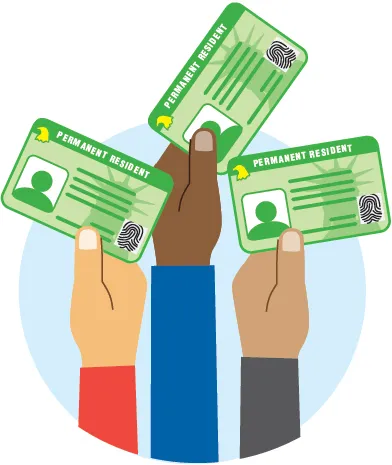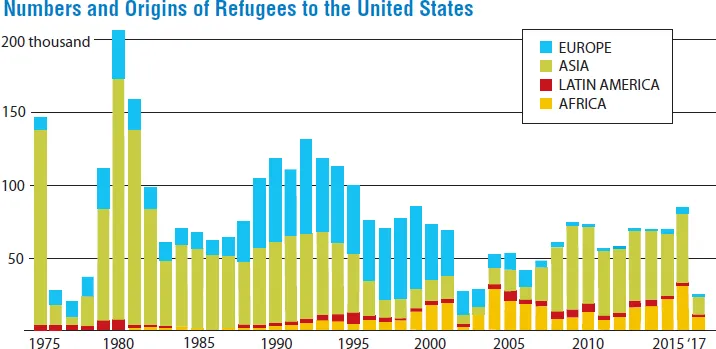![]()
Coming to America
Who Should
We Welcome,
What Should
We Do?
FOR CENTURIES, people from other countries have come to the United States in search of a better life. The steady influx of newcomers helped build America, creating a mix of cultures, religions, and ethnicities not found anywhere else in the world. Today, people born in another country make up around 13 percent of the US population.
As we begin to think about what kinds of changes we may want to make in our immigration policies, it’s helpful to consider where we are now:
How many immigrants are coming into the United States?
Currently, the United States legally accepts around one million immigrants a year.
How do we choose who is admitted now?
Roughly two-thirds are admitted because they have family members already here. Of the remaining third, about half are admitted based on their job skills and half are refugees from political or religious persecution. There is a backlog of about 4 million people waiting to have their immigration applications evaluated and processed.
Has the rate of immigration increased?
In 1970, slightly less than 5 percent of the population was foreign-born. Today, the percentage has more than doubled to 13 percent.
How many undocumented immigrants live in the United States?
An estimated 11 million people now living in the United States entered without permission, typically crossing the border illegally or staying here after their visas have expired. Many have lived in the United States for decades, and have spouses and children who are US citizens.
Who are “the DREAMers”?
About 690,000 young people, sometimes known as “the DREAMers,” were brought to the United States as children, many as infants or toddlers. A government program called Deferred Action for Childhood Arrivals (DACA) granted them temporary legal status, but that program is now being re-evaluated.
But beneath these simple numbers is a maze of complicated quotas, shifting criteria, and unknowable timelines. Someone from a country with relatively few immigrants might wait 7 years for a green card, while a person from the Philippines or Mexico, which have millions of applicants, could wait 20 years.
Different groups of people may be particularly affected by changes in our approach to immigration:
■US citizens, including people born in the United States and those who have become citizens through naturalization;
■Newcomers who came to the country legally through our current system;
■Refugees escaping war or oppression;
■People now living in the United States who entered the country without documentation, many who arrived decades ago;
■People brought here as infants or children by parents who came into the country without permission.
But the immigration issue affects all Americans in one way or another. American companies are experiencing a shortage of high-skilled professionals. Those out of work face increased competition for low-wage jobs. The news frequently reminds us of the threat of terrorism. And, while some communities are thriving with large immigrant populations, others question whether their communities will be able to assimilate the increasing number of newcomers. These and other challenges raise pressing questions about the nation’s immigration policies:
■Should we reduce the number of immigrants legally admitted into the United States each year? If so, how do we decide who should be accepted?
■How should we handle undocumented immigrants in a way that is humane, but also fair to the millions who are waiting to enter legally?
■Does the current flow of newcomers compromise our sense of national unity or instead build on a rich history of diversity?
■Does the United States have a humanitarian responsibility to take in refugees whose lives are in danger? How many can we realistically accommodate?
This issue guide offers a framework for considering the priorities that should inform our nation’s immigration laws. It presents three options for moving forward, each based on a different way of looking at the issue and each with a different set of prescriptions about what should be done.
None of these options are more “correct” than the others, and each option has trade-offs, risks, or drawbacks that need to be considered if we are to build a fair immigration system that reflects what we hold most valuable.
![]()
Option 1:
Welcome
Immigrants,
Be a Beacon
of Freedom
THIS OPTION SAYS THAT IMMIGRATION HAS HELPED MAKE AMERICA WHAT IT IS TODAY—a dynamic and diverse culture, an engine of the global economy, and a beacon of freedom around the world. It says that part of what defines America as a nation is the opportunity for all to pursue the American dream. We should develop an immigration policy that builds on that tradition by welcoming newcomers, helping immigrant families stay together, and protecting those fleeing from war and oppression.






